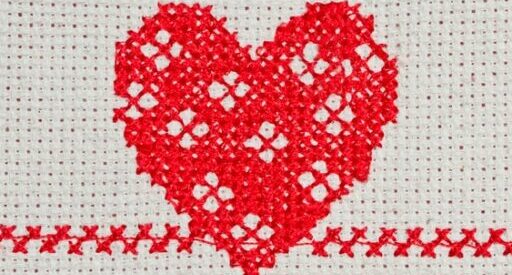Industrial Sewing Machines Market to Hit $3.5 Billion by 2031
The industrial sewing machines market is experiencing significant growth. By 2031, the market is projected to reach a value of $3.5 billion, up from $2.4 billion in 2024. This growth is driven by rapid industrialization, rising apparel production, and advancements in automation technology.
The apparel industry remains the dominant segment. It leverages high-speed and automated sewing machines to enhance efficiency. Asia Pacific leads the market due to its strong textile manufacturing base, particularly in China, India, Bangladesh, and Vietnam.
The shift towards sustainable manufacturing is increasing the demand for energy-efficient machines. Meanwhile, the rise of e-commerce and fast fashion is accelerating the adoption of advanced sewing technologies.
Table of Contents
Market Overview
The industrial sewing machines market is on a steady growth trajectory. It has a projected compound annual growth rate (CAGR) of 5.2% during the forecast period. This growth is fueled by several key factors, including rapid industrialization, increased apparel production, and advancements in automation technology. The market is expected to reach an impressive value of $3.5 billion by 2031, up from $2.4 billion in 2024.
Key Market Drivers
Several factors are driving the growth of the industrial sewing machines market:
- Rapid Industrialization: The expansion of industrial activities globally has led to increased demand for efficient and high-speed sewing machines.
- Rising Apparel Production: The growing fashion industry and consumer demand for fast fashion and customized garments are boosting the need for advanced sewing technologies.
- Advancements in Automation: Automation and robotics are transforming the market landscape, enabling higher efficiency and reduced dependency on skilled labor.
- Sustainable Manufacturing: The shift towards eco-friendly manufacturing practices is increasing the demand for energy-efficient sewing machines.
- Growth of E-commerce: The rise of e-commerce platforms is accelerating the adoption of high-speed and versatile sewing machines.
Market Segmentation
The industrial sewing machines market is categorized based on product type, application, and end-user industry. Each segment plays a crucial role in the market’s overall growth and development.
By Product Type
The market includes several types of sewing machines:
- Lockstitch Machines: Known for their versatility and precision in garment manufacturing, lockstitch machines dominate the market.
- Chainstitch Machines: These machines are essential for specific types of stitching, offering flexibility in various applications.
- Overlock Machines: Overlock machines are crucial for finishing edges and preventing fraying in textiles.
- Coverstitch Machines: These machines are used for hemming and providing a professional finish to garments.
- Zigzag Stitch Machines: Zigzag machines are versatile and used for decorative stitching and reinforcing seams.
By Application
The key sectors utilizing industrial sewing machines include:
- Apparel: The apparel industry accounts for the largest share, driven by the demand for fast fashion and customized garments.
- Automotive Upholstery: The automotive sector is witnessing a surge in demand for sewing machines to enhance the production of car seat covers and airbags.
- Furniture: Sewing machines are essential for producing high-quality upholstery and home furnishings.
- Footwear: The footwear industry relies on specialized sewing machines for stitching durable and aesthetically pleasing shoes.
- Technical Textiles: These textiles require advanced sewing technologies for applications in various industries, including healthcare and construction.
By End-User Industry
Major consumers of industrial sewing machines include:
- Garment Manufacturers: These manufacturers are the primary users, leveraging high-speed and automated machines to enhance production efficiency.
- Automotive Companies: The automotive industry uses sewing machines for producing car seat covers, airbags, and other interior components.
- Home Furnishing Producers: These producers rely on sewing machines for creating high-quality upholstery and home décor items.
- Footwear Brands: Footwear brands use specialized machines for stitching durable and aesthetically pleasing shoes.
Regional Insights
The industrial sewing machines market is geographically diverse. Asia Pacific leads the way due to its strong textile manufacturing base. Key countries in this region include China, India, Bangladesh, and Vietnam, where large-scale garment production fuels demand. These countries benefit from low labor costs, government incentives, and expanding export markets.
North America and Europe
In North America and Europe, there is an increased adoption of automated and digitalized sewing machines to enhance productivity and compensate for labor shortages. The United States and Germany are key players in technological advancements in industrial sewing machinery.
Latin America and the Middle East & Africa
These regions are witnessing steady growth, driven by the expansion of the textile industry and the increasing presence of global apparel brands. Emerging markets in Africa and Latin America offer new growth avenues for manufacturers as the textile industries in these regions develop rapidly.
Market Challenges
Despite significant growth, the industrial sewing machines market faces several challenges:
- Skilled Labor Shortages: Particularly in developed countries, where sewing machine operation requires specialized training.
- Competition from Alternative Technologies: Technologies such as ultrasonic welding and adhesive bonding are limiting the adoption of conventional industrial sewing machines.
- High Initial Investment Costs: Automated sewing machines require substantial capital investment, posing a barrier for small and medium enterprises.
Market Opportunities
The integration of AI and IoT in industrial sewing machines presents lucrative opportunities. These technologies enable real-time monitoring, predictive maintenance, and improved efficiency.
Additionally, the demand for customized and 3D-printed textiles is driving innovation in sewing machine technology. Expanding into emerging markets such as Africa and Latin America offers new growth avenues for manufacturers.
Competitive Landscape
The industrial sewing machines market is highly competitive. Key players are focusing on technological innovation, strategic partnerships, and product development. Leading companies are investing in automated and digitalized solutions to enhance efficiency and sustainability.
- JUKI Corporation: Introduced a new series of automated lockstitch machines with IoT-enabled monitoring features.
- Brother Industries, Ltd.: Launched an energy-efficient, high-speed industrial sewing machine aimed at reducing operational costs and carbon footprint.
- Jack Sewing Machine Co., Ltd.: Expanded its presence in Southeast Asia, targeting growing textile industries in the region.
- Bernina International AG: Investing in AI-driven sewing machines to improve automation and customization features.
For more in-depth information, you can visit the source of this data here.
Conclusion
The industrial sewing machines market is set for steady growth. This growth is driven by technological advancements, rising apparel production, and increasing automation.
While challenges such as labor shortages and competition from alternative technologies persist, opportunities in AI-driven sewing solutions and emerging markets provide a strong growth outlook. As industries shift toward sustainable and digital manufacturing, industrial sewing machines will remain an integral part of the global manufacturing landscape.


